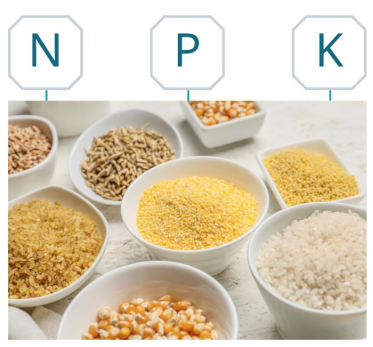Introduction
Your LYKO hydroponic system has been set up. The seeds have been planted, and the lights are doing wonders. As you wait for the plants to grow, another thing to carefully look into is giving your plants the nutrients that they need in the form of plant food.
Consider your plants like growing babies—they need different types of nutrients to grow well, and all of these must be given in a balanced amount. This means you can’t give plants too much of one nutrient, totally forget about another nutrient, and then expect the excess nutrient to compensate for whatever is lacking.
Any nutrient deficiency can cause any of the following problems:
- The seed may not germinate
- The plant may not develop roots, stems, leaves, or flowers properly
- The plant may not produce seeds to create new plants
In the same manner, too much of a nutrient can also do harm to your plants. For example, too much manganese will make the leaves turn yellow and make the plant eventually die.
The key is balance—giving your plants the right nutrients in the right amount.
So, what nutrients do your plants need for them to grow? Scientists have identified 16 essential nutrients that plants need. You can refer to the figure below for the list of nutrients, grouped according to the relative amount of each that plants need to grow well:

1. The primary nutrients or macronutrients (green blocks) are the nutrients that plants need in large amounts—Nitrogen (N), Phosphorus (P), and Potassium (K). Together with these nutrients are the basics—Carbon (C), Hydrogen (H), and Oxygen (O). These are macronutrients, but these are not included in the table since these are already in the air and water that plants receive.

2. The secondary macronutrients are those needed in moderate amounts—Magnesium (Mg), Calcium (Ca), and Sulfur (S).

3. The micronutrients are required in very tiny amounts. They are Boron (B),Chlorine (Cl), Copper (Cu), Manganese (Mn), Iron (Fe), andZinc (Zn). The function of Nickel (Ni) is still arguable in plant growth, but similar elements to it are Cobalt (Co), Silicon (Si), Sodium (Na), and Vanadium (V).

To give your plants the right nutrients they need, you can create your own nutrient mix or get a complete nutrient package from plant stores. If you’re a beginner in hydroponic planting, it is recommended that you buy a nutrient pack. Later on, as you become more comfortable with planting, you can start mixing your own nutrients.
The LYKO hydroponic system is designed for both beginners and seasoned plant lovers. The system is packed complete with a patented nutrient solution, which is composed of the following nutrients:
|
Bottle A solution composition |
Bottle B solution composition |
||
|
Total N |
11.0% |
Total N |
12.0% |
|
Soluble P2O5 |
9.0% |
CaO |
15.0% |
|
K2O |
30.0% |
MgO |
5.0% |
|
MgO |
2.0% |
|
|
|
EDTA-Fe |
0.3% |
|
|
|
EDTA-Mn |
0.06% |
|
|
|
EDTA-Cu |
0.005% |
|
|
|
EDTA-Zn |
0.01% |
|
|
|
B |
0.1% |
|
|
The LYKO nutrient solution is complete and includes all of the essential macronutrients and micronutrients. Each solution has been formulated scientifically and comes with patent protection.
LYKO also uses nutrients based on EDTA (i.e. EDTA-Fe), which are a little more expensive but more helpful for plant growth. The nutrients come in two separate bottles to prevent excessive concentration that might result in some sediments.
Below, we show a comparison between the LYKO nutrient solutions and another brand. The LYKO solution observably contains more nutrients, so you know your plants are getting enough of what they need.

